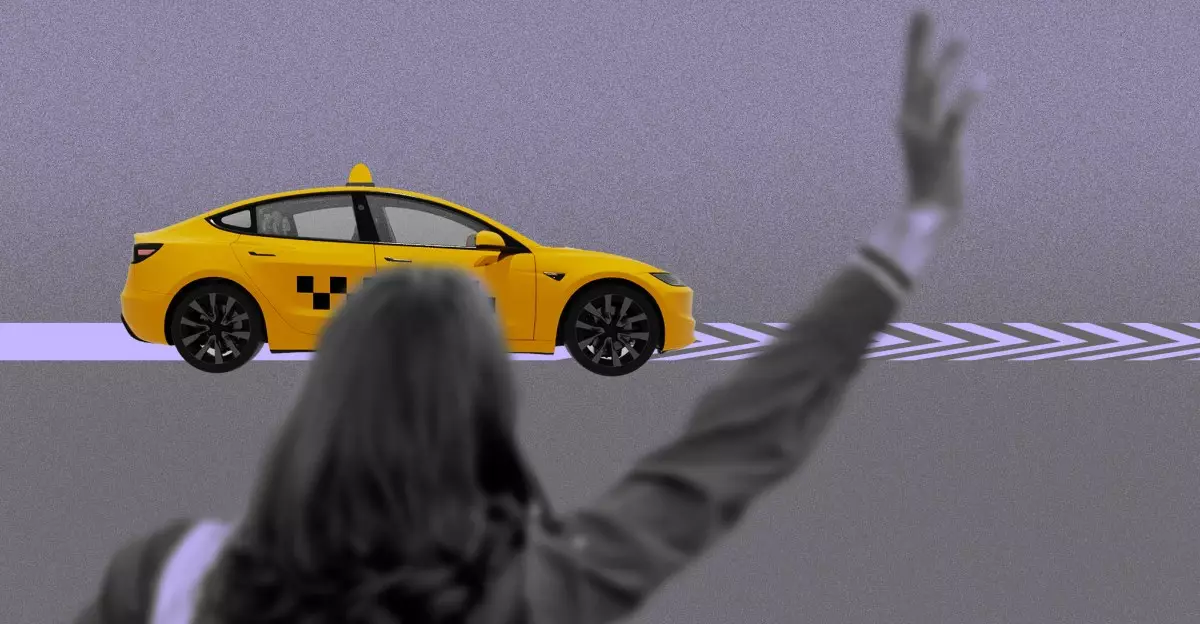Tesla’s recent rollout of its much-anticipated robotaxi service in Austin, Texas, was anything but a traditional tech launch. Unlike previous high-profile unveilings, this event was notably devoid of established journalists and mainstream media voices. Instead, a carefully curated group of Tesla enthusiasts and influencers dominated the narrative. This selective access reflects a deliberate strategy by Tesla and its CEO Elon Musk to sideline critical scrutiny. Journalists were not only excluded from the robotaxi interiors but were openly mocked when they tried to engage with riders and seek basic information about the service.
This orchestrated exclusion perpetuates a growing divide between Tesla and traditional media. What’s striking is how Tesla’s loyal fanbase has internalized Musk’s stance against critical reporting, often dismissing, ridiculing, or outright attacking anyone who questions the company’s bold claims. Such tribalism creates an unhealthy feedback loop that amplifies enthusiasm but discourages rigorous questioning—an essential element for technological progress and accountability.
Influencers as Gatekeepers of Tesla’s Narrative
The influencers invited to the robotaxi rollout wield enormous control over the messaging that reaches the public. Figures like Kim Java, with hundreds of thousands of YouTube subscribers, have expressly rejected interaction with legacy media to “control their own narrative.” This phenomenon—where enthusiasts transform into unofficial spokespeople—has become a hallmark of Tesla’s strategy post-2020. These content creators livestream demonstrations, share glowing reviews, and perpetuate marketing messages in echo chambers on Musk-controlled platforms such as X (formerly Twitter) and YouTube.
Yet, the glowing portrayal of Tesla’s robotaxi initiative masks an important reality: many experts and independent observers remain skeptical about whether the technology has truly reached the promised level of autonomy and safety. By limiting critical voices and boosting fan-driven content, Tesla blurs the line between genuine news and promotional hype. The result is a rollout that feels more like a prolonged beta test swept under the rug by fervent amplification from Tesla’s inner circle.
Corporate Propaganda or Fan-led Journalism?
Experts studying this phenomenon, such as Boston University’s Joan Donovan, label Tesla’s approach as a textbook example of corporate propaganda. Instead of inviting scrutiny and transparency, Tesla has leveraged influencer enthusiasm to rehabilitate its reputation amid ongoing controversies. Ed Niedermeyer, an author and critic of Tesla, notes that the influencers serve as a “Greek chorus,” essentially echoing a script designed to fortify Tesla’s public perception.
Even online forums and communities have become arenas where pro-Tesla narratives overwhelm discussion, with moderators perhaps linked to Tesla itself shaping conversations to favor the company. This commandeering of discourse undermines the democratic exchange of ideas crucial for the development of robust autonomous vehicle technologies.
The Risks of an Insular Marketing Ecosystem
Tesla’s infiltration of media spaces via fans and influencers with vested interests is unsettling from a broader industry perspective. These allies often benefit materially—through referral programs, exclusive events, or even stock value appreciation—when Tesla’s image remains untarnished. Some insiders report being removed from rewards programs after expressing criticism, suggesting that loyalty is actively policed within the community.
This echo chamber effect generates real risks. When a tech company polices access and rewards only affirming voices, it constrains the feedback loop needed to identify flaws and improve products. While enthusiastic promoters like Galileo Russell may genuinely believe in Tesla’s mission, their positive spin on suboptimal demos—like last year’s “We robot” event—can shield the company from accountability and delay necessary course correction.
The Imperative of Openness Amid Technological Ambition
Tesla’s vision of cities populated by millions of autonomous robotaxis is undoubtedly revolutionary. However, such an ambitious future relies on more than just loyal fans and influencer endorsements. The path to widespread adoption demands engagement with diverse stakeholders—including skeptics, independent journalists, regulators, and everyday users.
Ironically, Tesla’s barricading of critics and its cultivation of an insular media environment may ultimately limit its ability to solve complex problems intrinsic to autonomous driving technology. Without transparent discourse and critical assessment, even the most innovative companies risk faltering when confronted with unexpected challenges.
As the robotaxi service scales up, Tesla will have to reconcile the tension between controlling its narrative and embracing the openness that fuels true innovation. For now, the company’s selective rollout strategy highlights the perils of an enterprise that relies too heavily on echo chambers rather than open dialogue to define its public identity.

